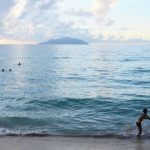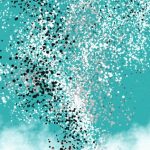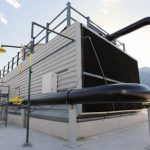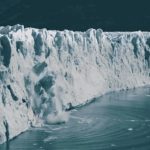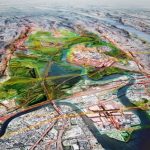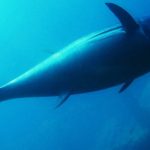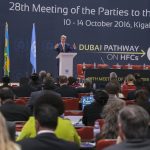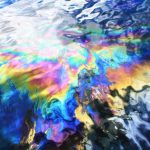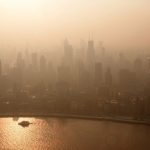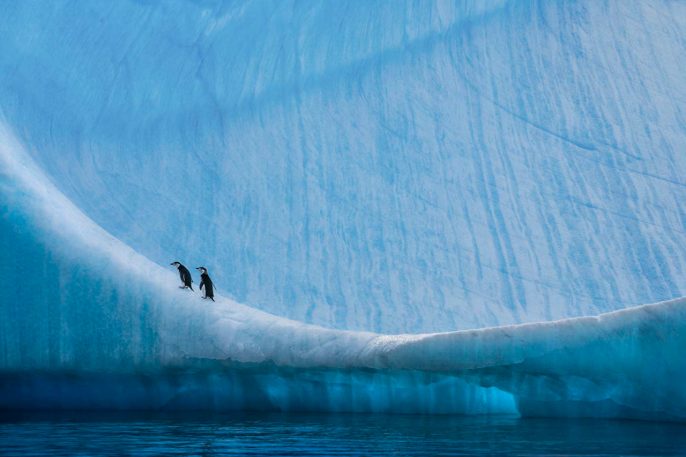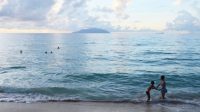Capturing The Beauty Of Ice, Polar Bears, And Penguins’ Before They Are Gone Forever
A nature photographer who feels most at home in the remote, freezing corners of the world, Paul Nicklen knows about patience. Growing up on Baffin Island in northern Canada and traveling among the Inuit tribes, Nicklen learned how hunters would often wait well over a day, crouched by a hole in the ice, to catch a seal to eat. When Nicklen journeys to the poles to capture images of little-observed species like the Antarctic leopard seal, he’ll wait patiently for the perfect shot. “I can go down under the ice for long periods of time and wait, and come back with images that nobody else in the world can,” Nicken tells Fast Company. “That’s what my mission and my role is now.”
In his work, Nicklen captures an environment rapidly shifting away from the arctic landscape he inhabited as a child. In 2005, the same Inuit tribe that Nicklen grew up among sued the American government on the basis that greenhouse gas emissions from the U.S posed a threat to their livelihoods and their culture. The suit went nowhere, but the effects of climate change on the Inuit’s region persist: A friend of Nicklen’s died of hypothermia after the ice sheet cracked under his snowmobile and plunged him into the water. When he ventured to Greenland, Nicklen spoke to an Inuit descendant of Sir Robert Peary, who told him that the sea ice they used to traverse to reach their traditional hunting ground had completely melted away. Along their normal travel patterns across the Beaufort Sea, young polar bears are dying, being forced to swim some 400 miles they once crossed by sea ice.
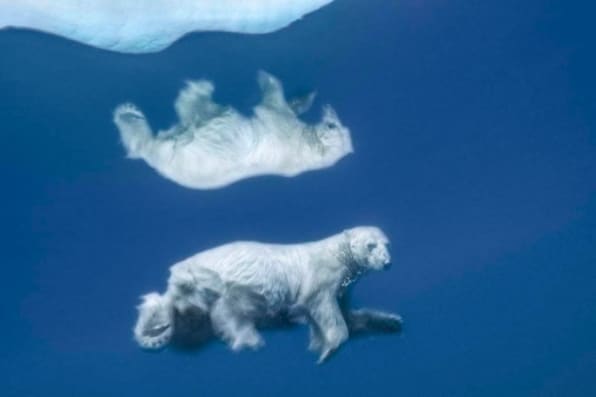
We, thousands of miles away, do not see this. “You know the stats–we’re at the lowest level of sea ice in recorded history; in 20 or 30 years, there will be no multiyear ice left. Without it, there will be a total collapse of this ecosystem,” Nicklen says. But with no visual guide to what that ecosystem is and the people and species it supports, “there’s a huge disconnect,” he says. So when Nicklen, on a donor trip with SeaLegacy three years ago, came across a dead polar bear on the shoreline of Svalbard, he was overwhelmed with a sense of purpose. “This was something I could force-feed to the world,” he says.
In the mid-’90s, after abandoning a career as a wildlife biologist in the Northwest Territories, frustrated over his profession’s lack of effective data-sharing and ability to drive change, Nicklen transformed his lifelong passion for photography–which he learned from his mother, who owned the only camera and darkroom on Baffin Island–into a career as a photojournalist. “Science is crucial, but it’s not breaking down the walls of apathy,” Nicklen says. “I thought: If I can use my camera to tell these stories visually, and reach a million people, I’m at least getting the story out there.” His career as a contributing photographer for National Geographic has taken him to the farthest reaches of the arctic and his photographs have won him worldwide recognition.

And while Nicklen’s work is still featured in National Geographic, he’s ventured into more immediate means of sharing the stories for which he is often the only mouthpiece. Nicklen’s Instagram followers number more than 3 million; in the several years since he’s been posting to the platform, he’s watched his followers rise up to quell the (fewer and fewer) doubts expressed by climate-change deniers. And through his nonprofit, SeaLegacy, Nicklen aims to amass “the best visual storytellers in the world—videographers, scientists, photographers.” He says, “We’re going to become like Jacques Cousteau 2.0 but using modern technology like drones, and have this boat out on the water year round, funded by philanthropists, from which we can share our stories, photographs, data, and information immediately and for free on our platform. We need to be constantly producing this content and delivering it to the world,” he says. Nicklen is aiming to secure an electric-powered catamaran that can operate in any body of water in the world, but securing the funding for that venture, he says, will be a process.
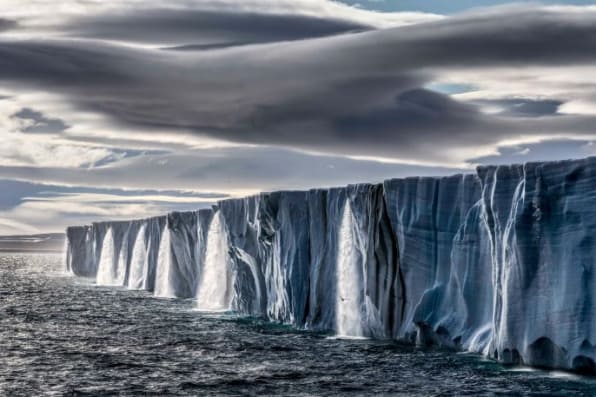
In October, after Nicklen finished a talk on photography and conservation at the PhotoPlus convention at the Javits Center in New York, the wedding photographer Joseph Lin walked up to him. “You know, you get people coming up to you at these events all the time, asking how they can help,” Nicklen says. So when Lin told Nicklen he admired his work and asked how he, as a commercially successful photographer with an environmentalist slant, could support it, Nicklen said, half-jokingly: “How about we open a gallery?” Lin nodded and said okay.
Nicklen expected never to see Lin again, but a half an hour later, he was still hanging around, and serious about the idea. He had two friends in real estate who could help financially back the venture so a significant portion of the gallery’s proceeds could go toward SeaLegacy, which, as Nicklen had just announced at PhotoPlus, he is hoping to scale up over the next several years. Once Lin and Nicklen decided that yes, they would open this gallery, progress unfolded quickly. They found a space in early March, and this Earth Day, April 22, the Paul Nicklen Gallery will be open in New York’s SoHo neighborhood.

Revenue from the new gallery will help transform that vision of SeaLegacy into a reality, but the gallery’s function extends beyond the monetary. Nestled in the middle of a New York neighborhood lined with expensive boutiques and high-end restaurants, the gallery, Nicklen says, is a permanent, brick-and-mortar extension of his work and mission; a reminder to people frustrated by the state of the planet that there are others out there doing their best to protect it. “When I’m out on my boat filming my next project, I want the photographs to keep working, whether it be on Instagram or in this gallery,” Nicklen says. “I want these places to be a sort of homing beacon for people, a place where they can come and deal with their emotions and frustrations and leave with a message of hope, and realize they’re not the only ones out there who care.”
As the gallery develops, Nicklen plans to run youth and education programs out of it, and to bring in other photographers like his partner Cristina Mittermeier, who photographs global cultures and the effects of climate change on human populations, and more artists who are like-minded. “We’re not going to shy away from the real issues,” Nicklen says. “We’re going to get into the ivory trade and the last of the rhinos and the killing of silverback gorillas.” This is not a gallery, Nicklen says, where people should walk in “expecting to look at candy on the walls, or to find something they can take home and hang up. People will come in here to learn something, they’re going to leave here with knowledge, and they’re going to learn how to get involved.”

Face to Face

Penguins Split

Ice Waterfall

Spirit of the Rainforest

Natures Window

Home Ice Advantage

Gathering of Unicorns

Majesty Surfacing

Polar Reflection

The Long Summer’s Wait

Arctic Ghost

Arctic Nomad

Ephemeral Palace

Evolve

Kings of Antarctica

Polar Impressions

Tusked Titans

Yukon Rains
(62)


